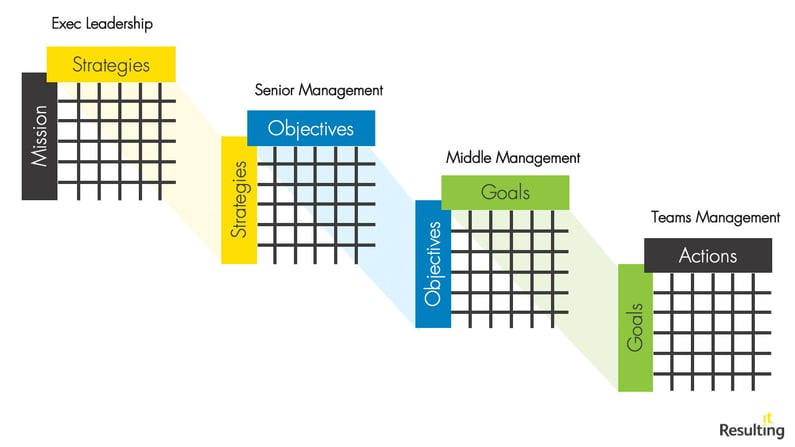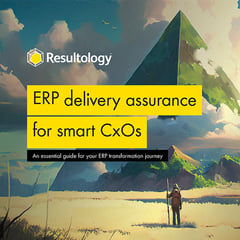Just outside Osaka lies the Kobe Shipyard.
And it’s there in the 1960s that something different started happening.
Kobe Shipyard & Machinery Works of was part of Mitsubishi Heavy Industries and has played a major role in the companies leading-edge technology innovation since the shipyard was founded in 1905.
But in the post war years of the late 50s and early 60s, innovation was more than technological.
It was here that one of the most influential management philosophies of the last century was invented.
Hoshin Kanri.
Ho is the Japanese word for Method.
Shin is the term for a shiny needle or compass pointer.
Hoshin is therefore a method for setting direction.
And Kanri is a comparison word - it relates to the degree of likeness - Fairly vs.Significantly.
So, Hoshin Kanri is the method of pointing in the right direction significantly using a shiny metal needle.
Essentially, it’s a Vision Compass.
I first came across the Hoshin Kanri model during my Manufacturing Degree. And then again when I worked at Unpart - a company famous for adopting and deploying innovative manufacturing models across the business.
Hoshin Kanri has stuck with me, a least in a simplified form, ever since.
It’s used to identify the critical few strategic things for the business and to maintain a focus on achieving its goals while meeting ‘normal’ day-to-day operational requirements.
Sometimes known as ‘Policy Deployment’, Hoshin Kanri breaks down Strategy into bite-sized chunks that can be communicated from leadership to teams in actionable form that ensures their actions remain connected back to an overall strategy.
Done right, it enables large teams to work together on seemingly disparate actions in a way that aggregates up to an overarching strategy.
At a senior level, Executives break their thinking down into Strategies and Missions.
The difference?
The Strategy is the big end-game. A broad statement that can be easily understood by everyone.
The Mission states the What and the Why. It’s outcome based and inclusive to everyone in the company.
Certain Missions support certain Strategies.
Missions are passed down the chain and broken into Objectives. These state what will be done, to what extent and by when. Objectives have a 3-5 year term and are ‘breakthrough’ in nature.
And predictably, Objectives support Missions.

© Resulting Limited 2022
Middle Management are responsible for the Goals that support Objectives. A Goal is simply the degree to which an objective is met in a timeframe.
Finally, Goals are passed onto teams and individuals as Tasks. Again, it’s clear which Task supports which Goal.
Whichever way you traverse the chain, it’s possible for people doing discrete Tasks to connect them with a bigger Strategy, and for Strategy to be decomposed into work plans for entire teams. With complete traceability.
Why is this so cool, and how can I use it on an SAP programme?
In short, it’s one of the most effective ways to map out a SAP business case that you’ll ever come across.
Largely because there’s complete connectivity between Goals and Strategy.
Hoshin Kanri makes it ultra clear what needs to be measured and why.
It’s Benefit Tracking Nirvana.
And, you don’t need to take the model to its extremities. Simply by stating a Strategy and breaking it down into Missions (we call them Strategic Thrusts), you create a really useful framework from transformation, driving adoption strategies, and even to prioritise scarce resources in intensive tasks.
For example, why wouldn’t you place disproportionate effort on testing business processes that are key to your strategy over ‘commodity’ processes?
Why wouldn’t you place your budgetary roulette chips on changes and enhancements that support Strategic Thrusts?
If you’re an Executive, Programme Manager or Global Process Owner on a large SAP enabled transformation journey you’ll create a powerful sail by stitching together your business strategy and SAP strategy with a shiny needle.










